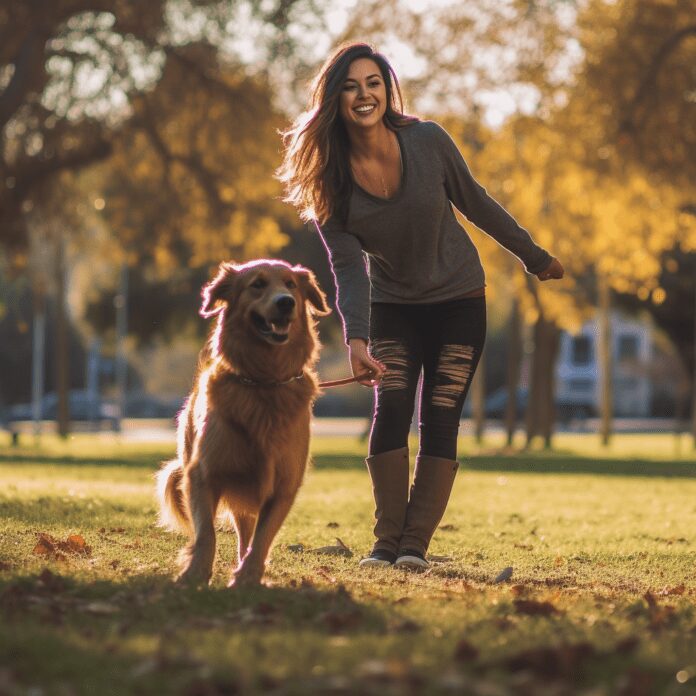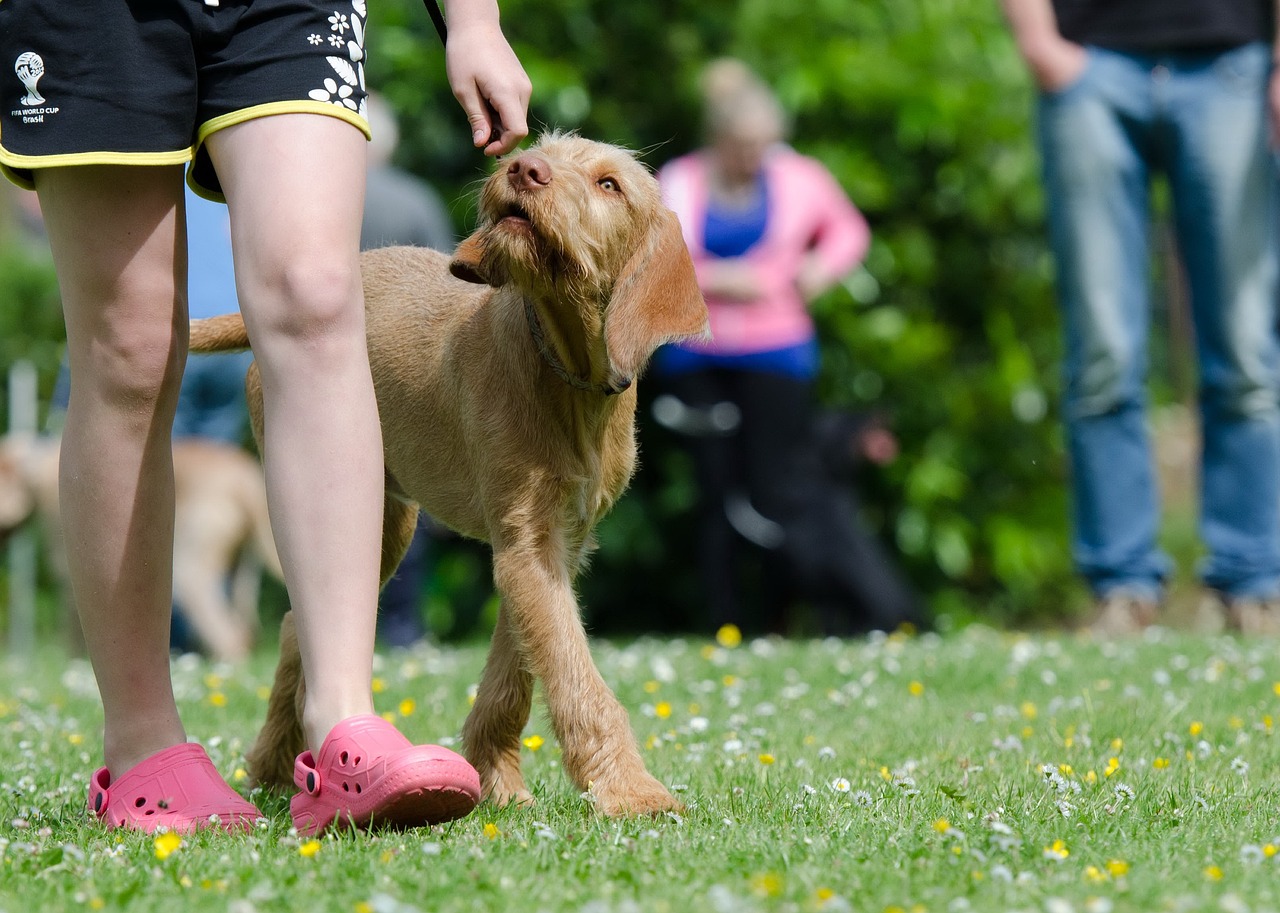Last Updated on June 5, 2023 by Dogs Vets
Dog Training Tips for Beginners: Ultimate Guide to Training Your Dog
Dog Training Tips for Beginners: Training your dog can be a fun and rewarding experience for both you and your furry friend.
Training your dog not only strengthens the bond between you and your pet, but it also helps to create a more well-behaved and socially responsible dog.
A trained dog is more likely to be welcomed in public settings and be a positive member of your community.
Additionally, training can help to prevent behavior problems and improve the overall quality of life for both you and your dog.
In this article, we will cover the basics of dog training, including how to get started, common training methods, and tips for success.
Before we dive into the specifics of dog training, it’s important to understand the needs and behavior of your dog.
Dogs are social animals and crave attention, structure, and boundaries. They are also intelligent and capable of learning new things. When training your dog, it’s important to be consistent, patient, and positive.
Dog Training Tips for Beginners
Obedience Training
To get started with dog training, it’s a good idea to enroll in a basic obedience class.

These classes are typically offered by local dog trainers or pet stores, and they provide an opportunity for you to learn the basics of dog training in a structured setting.
Basic obedience classes typically cover commands such as “sit,” “stay,” “come,” and “down,” as well as leash training and basic manners.
Effective Dog Training with Positive Reinforcement
There are several different training methods that you can use to teach your dog new commands and behaviors.
- One popular method is positive reinforcement, which involves rewarding your dog with treats or praise for good behavior. This method is based on the idea that dogs are more likely to repeat behaviors that are reinforced with positive rewards.
- Another method is called clicker training, which involves using a small handheld clicker to mark the exact moment when your dog performs a desired behavior.
The clicker serves as a clear and consistent signal to your dog that they have done something right, and it can be paired with a treat or praise as a reward. - A third method is called obedience training, which involves using verbal commands and hand signals to teach your dog specific behaviors.
This method is often used in more advanced training situations, such as when working with police or military dogs.
Take Note: No matter which method you choose, it’s important to be consistent with your training techniques and to always use positive reinforcement.
Avoid using physical punishment or yelling at your dog, as this can cause fear and aggression and may interfere with your training efforts.

One key to successful dog training is to start early.
Puppies are naturally curious and eager to learn, so it’s a good idea to begin training as soon as you bring your new furry friend home. This will help to establish good habits and behaviors from the start.
It’s also important to set clear boundaries and rules for your dog. This will help them understand what is expected of them and will make it easier for you to communicate your expectations.
Socialization
Another important aspect of dog training is socialization. This involves exposing your dog to a variety of people, places, and situations so that they become comfortable and confident in a variety of environments.
Socialization can help to prevent fear and aggression in dogs, and it is especially important for puppies who are still learning about the world.
Patient and Consistent
When training your dog, it’s important to be patient and consistent. Training takes time and effort, and it’s important to be consistent in your approach. It’s also important to be patient with your dog and to remember that they are still learning.
If you get frustrated or angry with your dog, it will only set back your training efforts.
It’s also important to remember that every dog is different, and what works for one dog may not work for another. Be open to trying different training techniques and methods, and be willing to adapt your approach as needed.
Expose them to New Environments
In addition to training your dog at home, it’s also a good idea to expose them to new environments and situations. This can help to build their confidence and social skills, and it
can also provide new opportunities for training and learning. Taking your dog for regular walks in different neighborhoods or visiting new parks or dog-friendly stores can be great ways to expose them to new experiences.
Use Toys for Positive Reinforcement
Another way to enrich your dog’s training and learning is through the use of toys and puzzles. These can provide mental stimulation and can help to keep your dog engaged and entertained.
There are many different types of toys and puzzles available, ranging from simple chew toys to more complex interactive games.
Training your dog can also be a great way to bond with your furry friend and to strengthen the relationship between you. By spending time training together, you can build trust, respect, and understanding between you and your dog.
In conclusion, dog training is an important and rewarding aspect of dog ownership.
It can help to establish a strong bond between you and your dog, and it can also make your dog a well-behaved and welcome member of your community.

By using positive reinforcement and being consistent, patient, and positive, you can effectively train your dog and help them to reach their full potential.
10 Questions & Answers on Dog Training
-
What is the best age to start training a dog?
It is generally best to start training a dog as early as possible, preferably when they are still a puppy.
Puppies are naturally curious and eager to learn, and starting training early can help to establish good habits and behaviors from the start.
However, it is never too late to start training a dog, and older dogs can also learn new tricks and behaviors with the right training approach.
-
What are some common methods of dog training?
Some common methods of dog training include positive reinforcement, clicker training, and obedience training.
Positive reinforcement involves rewarding your dog with treats or praise for good behavior, while clicker training involves using a handheld clicker to mark the exact moment when your dog performs a desired behavior.
Obedience training involves using verbal commands and hand signals to teach your dog specific behaviors.
-
What is socialization and why is it important for dog training?
Socialization involves exposing your dog to a variety of people, places, and situations so that they become comfortable and confident in a variety of environments.
Socialization is important for dog training because it can help to prevent fear and aggression in dogs, and it is especially important for puppies who are still learning about the world.
-
How do I choose the right training method for my dog?
The right training method for your dog will depend on your dog’s individual personality and needs, as well as your own training goals and preferences. It may be helpful to try out a few different methods and see what works best for you and your dog.
It’s also important to be open to adapting your approach as needed and to be willing to try different techniques if something is not working.
-
What should I do if my dog is not responding to training?
If your dog is not responding to training, it could be that they are not yet ready to learn the specific behavior you are trying to teach them.
In this case, it may be helpful to go back to basics and work on some simpler behaviors before trying to move on to more complex tasks.
It’s also possible that your dog is not yet fully motivated to learn the behavior, in which case it may be helpful to increase the value of the rewards you are using.
If these strategies don’t seem to be working, it may be a good idea to seek the guidance of a professional dog trainer.
-
How do I deal with my dog’s bad behaviors?
When dealing with bad behaviors in your dog, it’s important to remember that punishment is not always the most effective solution.
Instead, it’s often more helpful to focus on reinforcing good behaviors and ignoring or redirecting bad behaviors.
If your dog is displaying a particularly concerning or dangerous behavior, it may be necessary to seek the guidance of a professional dog trainer or behaviorist.
-
How can I prevent my dog from getting bored during training?
One way to prevent your dog from getting bored during training is to vary your training sessions and make them as fun and engaging as possible. This could involve using different toys and puzzles, changing up the location of your training sessions, or trying out new training methods and techniques.
It’s also important to make sure that your dog is getting plenty of mental and physical stimulation outside of training sessions, through activities such as walks, playtime, and interactive toys.
-
How do I know if my dog is ready for advanced training?
Your dog may be ready for advanced training if they have mastered basic obedience commands and have a good attention span. They should also be able to focus and stay motivated during training sessions.
If you are unsure whether your dog is ready for advanced training, it may be helpful to consult with a professional dog trainer or behaviorist.
-
How do I train my dog to be well-behaved in public?
To train your dog to be well-behaved in public, it’s important to start by teaching them basic obedience commands such as “sit,” “stay,” and “come.” It’s also a good idea to work on leash manners and to teach your dog to pay attention to you while in public.
Practice these behaviors in different locations and with distractions present to help your dog generalize their training to new environments.
-
How do I maintain my dog’s training once they have learned a new behavior?
To maintain your dog’s training once they have learned a new behavior, it’s important to continue practicing and reinforcing the behavior on a regular basis.
This could involve incorporating the behavior into your daily routine or setting aside specific times for training sessions.
It’s also important to continue using positive reinforcement and to make training sessions fun and rewarding for your dog.
By consistently reinforcing good behaviors, you can help to ensure that your dog continues to understand and follow their training.
Fact Check
We hope you enjoyed reading this article. What are your thoughts on the topic?
“At [Dogsvets.com], our goal is to bring you the most accurate and up-to-date information on all things pet-related. If you have any additional insights or would like to advertise with us, don’t hesitate to get in touch.
If you notice any errors or discrepancies in our content, please let us know so we can correct them.
We welcome your feedback and encourage you to share this article with others.”

















